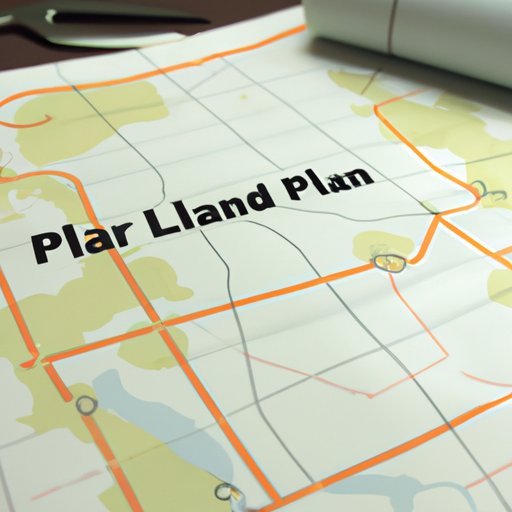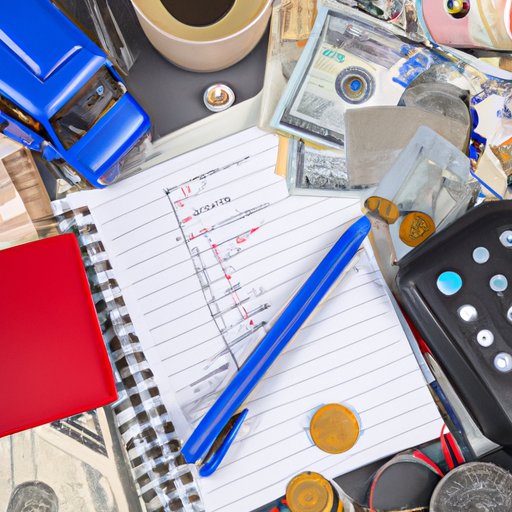Introduction
Taking a long road trip is an exciting way to travel and explore new places. From scenic drives to historic sites, the possibilities are endless. But before you hit the open road, there are a few things you should know to make sure your journey is successful. This article will provide tips on planning ahead, packing smart, making the most of your time, taking advantage of technology, budgeting for food and lodging, and staying safe.

Plan Ahead: Research and Map Out Your Route
Before you set out on your road trip, it’s important to do some research and map out your route. Start by researching the places you want to visit and the roads you’ll take to get there. Take into account the length of your trip and the type of vehicle you’ll be traveling in. Make sure to check the weather forecast for any potential storms or other inclement weather that may affect your route.
Once you’ve decided on your route, map it out. You can use online mapping tools such as Google Maps or MapQuest to plot the best route for your trip. This will help you plan for stops along the way, as well as estimate the amount of time it will take to reach each destination.

Pack Smart: What to Bring and What to Leave Behind
When it comes to packing for a long road trip, it’s important to bring the essentials, while also leaving behind items that could add unnecessary weight or clutter to your car. The first thing to consider is clothing. Pack enough clothes for the duration of your trip, but don’t go overboard. Stick to lightweight, wrinkle-free fabrics so you don’t have to worry about ironing. Also, remember to pack a few extra layers in case of cold weather or unexpected rain.
In addition to clothing, make sure to pack any necessary electronics, such as laptop, cell phone, and charger, as well as important documents like your driver’s license and insurance information. A first aid kit is also essential. Other items you may want to bring include snacks, water bottles, and books or magazines.
When it comes to items to leave behind, try to pare down your belongings as much as possible. Avoid packing bulky items like large suitcases or boxes, and instead opt for smaller bags and containers. You should also leave behind any items that are not essential to the trip, such as extra shoes or nonessential electronics.
Make the Most of Your Time: Games, Activities, and Sightseeing
When you’re on the road, it’s important to make the most of your time. To keep yourself and your passengers entertained, try playing games or engaging in activities. If you’re traveling with kids, bring along some classic games like I Spy or Twenty Questions. For adults, card games or trivia are great options. You can also bring along books, magazines, or a portable DVD player for movie night.
If you’re looking for more active activities, consider planning a hike or bike ride at one of your stops. You can also make the most of your trip by visiting local attractions or historical sites. According to a 2017 study by the American Automobile Association, over half of all road trips involve some kind of sightseeing activity.
Take Advantage of Technology: Apps, Music, and Podcasts
Technology can be a great tool when you’re on a long road trip. There are plenty of apps available to help you find the best route, book hotels, or locate restaurants along the way. You can also use music streaming services like Spotify or Pandora to create a personalized soundtrack for your journey. And if you’re looking for something to talk about, podcasts are a great way to pass the time. They can provide interesting conversations, inspiring stories, and funny anecdotes.
Budget for Food and Lodging
Food and lodging can be two of the biggest expenses of a long road trip. To save money, plan ahead and budget for meals and hotel stays. Before you leave, research restaurants and hotels along your route to find the best deals. Consider packing a cooler with snacks and drinks to save money on meals. And if you’re camping, make sure to purchase any supplies you may need in advance.

Stay Safe: Roadside Assistance and Emergency Preparedness
Finally, it’s important to stay safe on your road trip. Purchase roadside assistance coverage in case of a breakdown or accident. Also, make sure you have an emergency preparedness plan in place. Bring a spare tire, jumper cables, and a flashlight in case of a flat tire or dead battery. And if you’re driving in unfamiliar areas, let someone know your route and estimated time of arrival.
Conclusion
Taking a long road trip can be an exciting and rewarding experience. With proper planning, packing, and safety precautions, you can make sure your journey is memorable and stress-free. By researching your route, packing the essentials, making the most of your time, taking advantage of technology, budgeting for food and lodging, and staying safe, you can ensure that your road trip is a success.
(Note: Is this article not meeting your expectations? Do you have knowledge or insights to share? Unlock new opportunities and expand your reach by joining our authors team. Click Registration to join us and share your expertise with our readers.)
